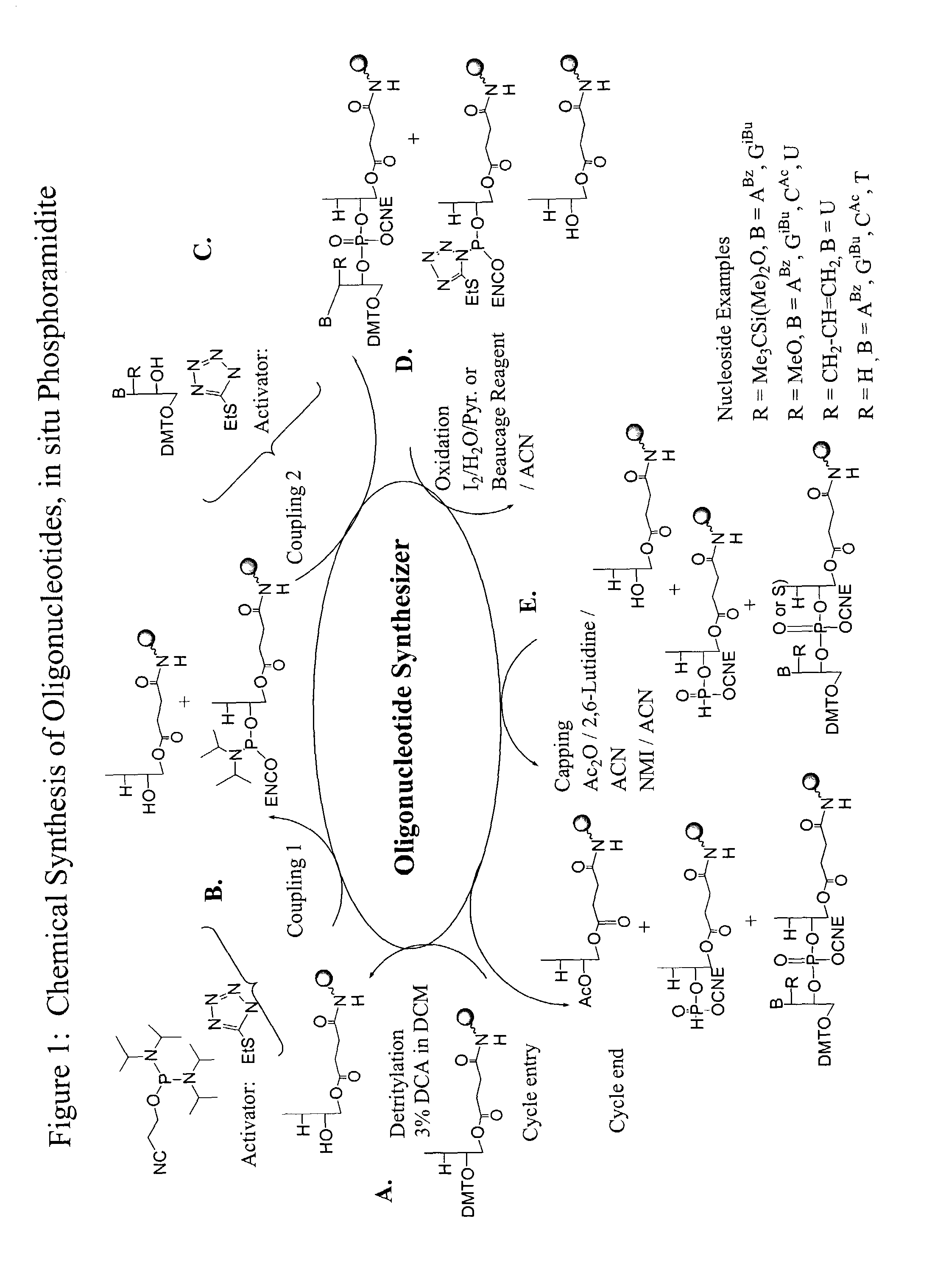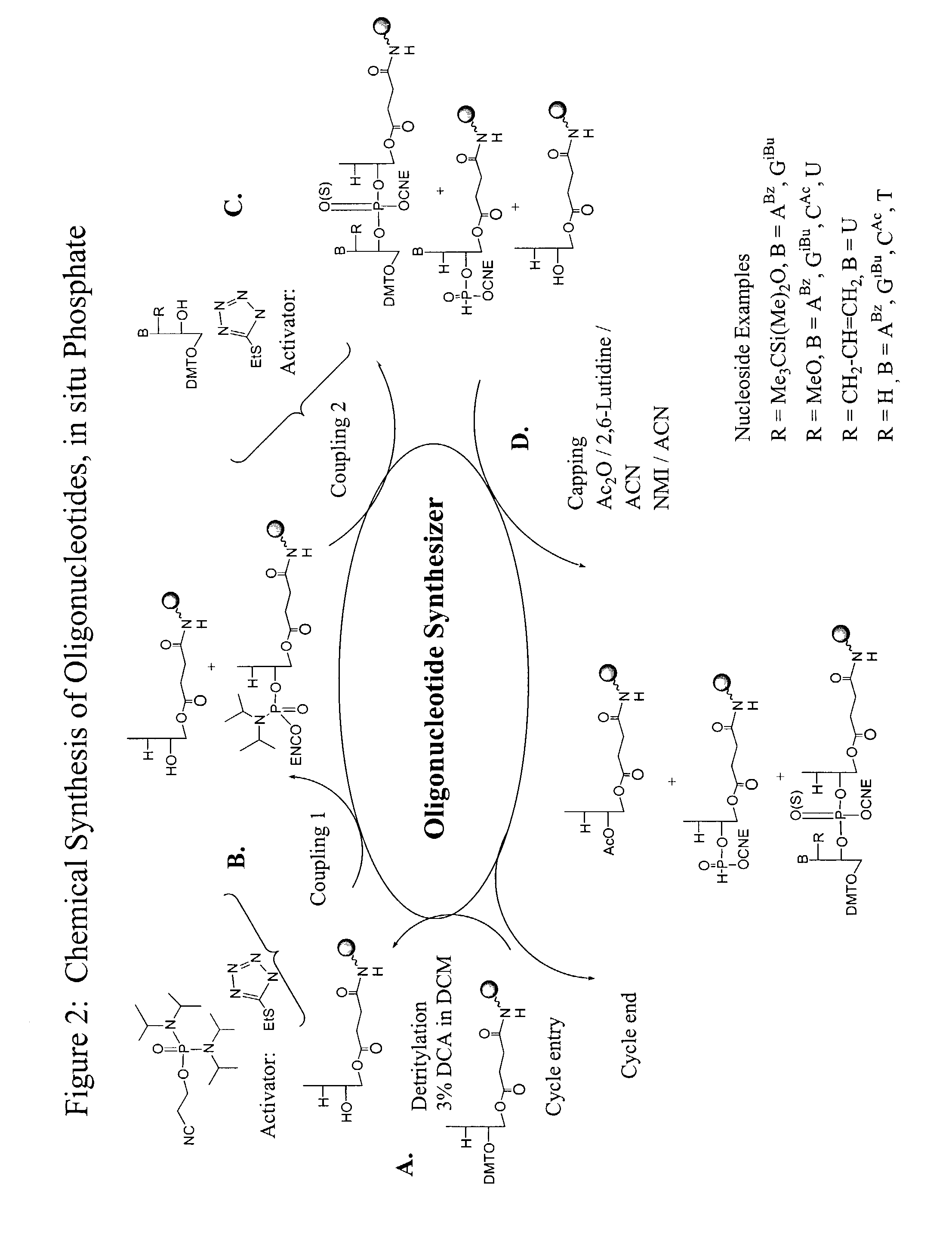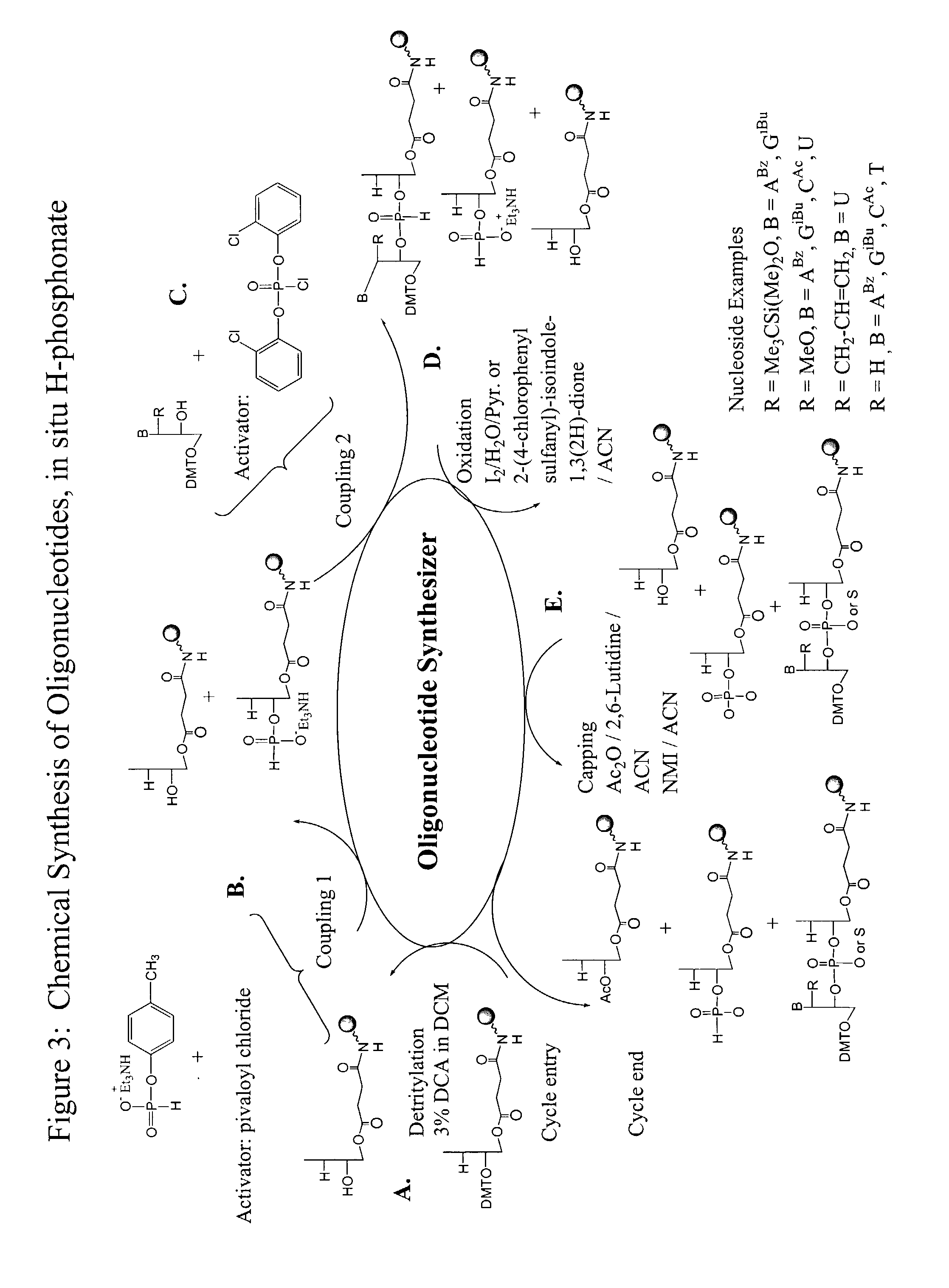Methods and reagents for oligonucleotide synthesis
a technology of oligonucleotide and reagents, which is applied in the field of new oligonucleotide chemical synthesis methods and reagents, can solve the problems of reducing the effective equivalents of phosphoramidite available for coupling, overall time and cost of preparing the nucleoside phosphoramidite reagents to be used as raw materials,
- Summary
- Abstract
- Description
- Claims
- Application Information
AI Technical Summary
Benefits of technology
Problems solved by technology
Method used
Image
Examples
example 1
Synthesis of 20 Atom CPG (Controlled Pore Glass), Urea-Dodecylamine (UDDA)
[0399]p-Nitrophenyl chloroformate (4.8 g, 23 mmol) was dissolved in a mixture of CH2Cl2 (150 ml) and anhydrous pyridine (20 ml) (FIG. 9). Aminopropyl CPG (20 g, Prime Synthesis, 631A°, Amine loading 180 μmoles / g), which was the chosen solid support material, was then added to this solution and the mixture was gently rotated for 3–4 hours at room temperature. The support was then filtered, washed with CH2Cl2 several times, followed by treatment with ether and dried. 20 mg of the solid support was submitted for loading test (described below) carried out by the addition of 0.2M NaOH (20 ml). The p-nitrophenolate anion liberated was monitored at 400 nm (e=17,000). The concentration of p-nitrophenolate onto this support was 200 μmole / gram of CPG.
[0400]Capping: Unreacted amine was capped by reacting the support with acetic anhydride / pyridine (100 ml, 1:1) for 30 minutes. The support was filtered, washed several time...
example 2
Synthesis of 19 Atom CPG, PEG-CPG
[0406]Tetraethylene glycol CPG support was prepared by following the same procedure as described in example 1, but tetraethyleneglycol diamine was used as the starting material rather than 1,12-dodecyl diamine. The chemical reactions are shown in FIG. 8. Final abasic loading on this support was 50 μmoles / g. The chemical structure for the PEG spacer is shown in FIG. 2.
[0407]Tetraethyleneglycol diamine was synthesized in two steps from tetraethyleneglycol ditosylate. The ditosylate (50 g, 99.5 mmoles) was dissolved in dry DMF (250 ml) and sodium azide (19.5 g, 350 mmoles) was added. The reaction mixture was heated at 100° C. for 16 h. The mixture was concentrated and then titurated with CH2Cl2. The solid was filtered, washed several times with CH2Cl2 and the combined washings was evaporated to dryness under reduced pressure. The product, tetraethyleneglycol diazide was distilled under vacuum at 180° C. bath temperature. The protocol gave a product yiel...
example 3
Synthesis of 22 Atom CPG, HHDA
[0409]16-Hydroxyhexadecanoic acid (10. 112 g, 37. 12 mmol) was co-evaporated with dry pyridine (3×30 ml) and then dissolved in dry pyridine (100 ml) (FIG. 7). To this stirred ice cold mixture, a solution of DMTCl (16.35 g, 48.25 mmol) in dry pyridine (100 ml) was added dropwise and the reaction mixture was allowed to stir at room temperature overnight. The reaction mixture was then cooled to 0° C., a solution of pentafluorophenol (9.56 g, 51.97 mmol) dissolved in a mixture of CH2Cl2 (50 ml) and pyridine (15 ml) was added drop-wise to the reaction mixture with stirring. After another hour, dicyclohexylcarbodiimide (10.72 g, 51.97 mmol) in CH2Cl2 (70 ml) was added dropwise and the reaction mixture was left stirring at room temperature overnight. Precipitated N,N-dicyclohexylurea was filtered and the residue was washed with CH2Cl2. The combined washings was evaporated to dryness, dissolved in CH2Cl2 (200 ml), washed with 5% NaHCO3 (100 ml) and dried over N...
PUM
| Property | Measurement | Unit |
|---|---|---|
| pore size | aaaaa | aaaaa |
| density | aaaaa | aaaaa |
| bath temperature | aaaaa | aaaaa |
Abstract
Description
Claims
Application Information
 Login to View More
Login to View More - R&D
- Intellectual Property
- Life Sciences
- Materials
- Tech Scout
- Unparalleled Data Quality
- Higher Quality Content
- 60% Fewer Hallucinations
Browse by: Latest US Patents, China's latest patents, Technical Efficacy Thesaurus, Application Domain, Technology Topic, Popular Technical Reports.
© 2025 PatSnap. All rights reserved.Legal|Privacy policy|Modern Slavery Act Transparency Statement|Sitemap|About US| Contact US: help@patsnap.com



